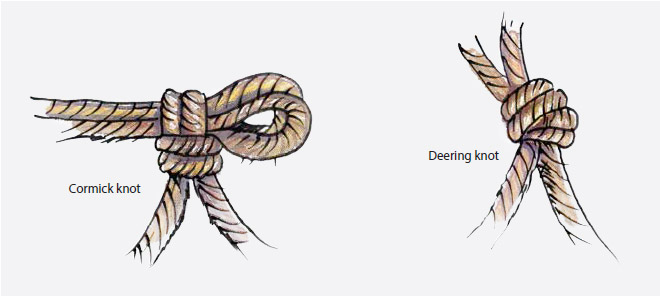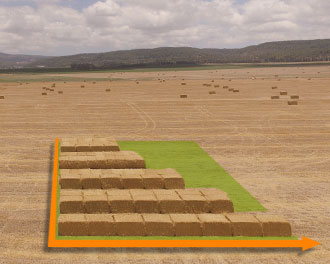| An important point that many twine users may not appreciate is the type of knot that their baler makes, which have a critical impact on how strong the twine actually is. There are two distinctly different types of knots used in large square balers; the Deering type knot and the Cormick type knot. The Cormick knotting system actually makes a ‘double diameter’ knot, commonly known as a bow knot (loop knot) with tails of different lengths, which usually avoids any slipping of the twine inside of the knot. The Deering knot, by comparison, can start to slip very easily, causing friction inside the knot that can start to burn the twine, which is the starting point of the knot pulling through or the twine breaking in extreme conditions. This burnt part of the twine slips out from the knot and is more likely to break as the strength of the twine has degraded due to the friction. |
Twine used in a Deering type of knotters will only be able to retain up to 55% of its tensile strength, the knot works as a knife against the twine. |
| So, we can clearly say that the ‘strength’ properties of any twine will be different depending on which type of knotter it is being used in. This knowledge immediately changes the accuracy of the information a producer quotes when stating the ‘knot strength’ of their twine unless full details of which type of knot it was tested in and under what conditions. | |
| Simply using a value called ‘knot strength’, without qualifications on which knot and what conditions it was tested, is definitely not the way do determine twine strength or quality. | |
| The ‘strength’ of knot made in a Cormick type of knotter will retain up to 70% or more of the tensile strength of the twine, the knot strength is higher because the angle between the twine and the knot is more open. | |
 |
|





